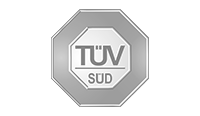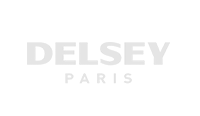Request a Demo
Trusted by leading brands, retailers, manufacturers and service providers across industries such as:
















Supply chain compliance has increased in complexity in the last several years. As the global supply chain landscape changes, the demand for visibility increases. Laws and regulations spanning across different jurisdictions are changing. These constant changes can be difficult for brands and retailers to stay on top of.
Keeping up to date with mandatory regulations is imperative. This can pose a challenge to supply chain management, as factoring in these changes can seem like a complicated task. Supply Chain risk management need to ensure they are building solid strategies for compliance. These strategies need to be applicable to all tiers of the supply chain. Executing a robust supplier governance and compliance program could deter financial loss and even save the reputation of your business.
Supply chain compliance is when businesses ensure their suppliers are adhering to regulations. These regulations can include sourcing products with ethical benchmarks and abiding by legislation. Business leaders are now focusing on environmental compliance, ethical sourcing and impact of supply chain operations on people and planet. This has led to the rise of mandatory reporting regulations of the supply chain.
Supply chain compliance is not just about the products itself, but the compliance across all aspects of the supply chain. The further the geographical reach of a supply chain, the more regulations will need to be monitored.
These mandatory reporting requirements demand transparency from brands and retailers. Consumerism is evolving and changing as we know it. Buying decisions are now based off trends and other social affairs. Consumers are looking to buy products that fulfil environmental concerns and social commitments. These decisions can influence political measures. Therefore, legislation is also evolving and changing. Mandatory supply chain laws are coming into practice.
Previously, businesses were expected to take voluntary approaches to supply chain compliance. They were expected to identify, prevent and address human rights violations and environmental hazards. Now, mandatory laws are either in effect or could pass soon to address these issues. Businesses are now expected to present proof that they are abiding by these mandatory regulations. A clear example is the new mandatory German supply chain due diligence law Lieferkettensorgfaltspflichtengesetz (LkSG), that was passed on January 1, 2023.
It requires large companies with over 3,000 employees to identify, prevent and address human rights and related environmental violations within their own and their direct suppliers’ operations.
The objective of LkSG is to improve traceability, ensure responsibility throughout the entire value chain, and facilitate access to information between stakeholders along supply chains. Those concerned are expected to adapt their existing risk management plans and update their compliance and sustainable contracts. Brands and retailers affected by this new law need to ensure thorough inspections are carried out and document keeping practices are maintained.
Ultimately, to keep up with demands, brands and retailers will need to establish a future-proof strategy for compliance.
The supply chain has changed greatly due to the nature of this vast ecosystem. The ever-growing supplier base and the need to track sub-suppliers at various tiers requires strategies to manage all the data. Due to differing geographical locations, collecting and managing this data can be difficult. Communication could be chaotic and the viability of supplier responses to surveys and queries via email and Excel sheets may be questionable. Other potential issues could be time constraints, where there are contractual agreements between multiple parties, or differentiating product lifecycles.
Therefore, the changing landscape of the supply chain could cause impending problems. Handling this dynamic and extensive supply chain data to ensure transparency could become quite a laborious task.
As the requirement for transparency increases, the financial cost rises. However, achieving supply chain compliance is a financial investment worth making. One may also argue that although the cost of compliance is great, the cost of non-compliance could be arguably greater.
This is why there is a large range of stakeholders who now demand a compliant supply chain. These stakeholders range from regulators to investors, providers, partners, consumers, and the media. Consequences of non-compliance are far-reaching in any organization. A lack of awareness for regulations could lead to different types of consequences. Unknown changes to geopolitical trade agreements and legislation could cause global logistics disruptions. They could have a significant impact on company performance as well as supplier collaboration. Companies could face heavy fines and delayed access to global markets.
Non-compliance could impact the company’s finances and their reputation in a way that may not be recoverable. Adapting to new and rapidly emerging requirements should be made to be a priority. Access and an understanding of the existing compliance requirements needs to be procured.
Greater transparency is crucial. Companies who prepare themselves are in a better position to handle future regulatory changes. Such preparations could be creating a robust supply chain policy that can alleviate the risks.
This policy could cover all realms of the supply chain. Visibility, clear communication, transparency, and collaboration should be the pinnacle of such policies. There are also key practices that can be adopted to further safe-guard businesses from such risks. Here are 4 areas that can be focused on to start with:
Ensure suppliers and factories in your supply chain are in alignment with current legislation. Using a centralized software solution that collects data and brings the new agility your business requires could help. Continuous improvement and problem areas that need solutions / improvements can be identified. Having a corrective plan of action in place can be key to supply chain compliance success.
Understanding the process of all aspects of the supply chain can also help. An awareness of all suppliers, sub-suppliers, components, materials, factories, and products, as well as the relationships between them can go a long way. Mapping these components in a centralized system could help brands and retailers gain further awareness of their supply chain. They will then be equipped to identify and mitigate risks quickly.
The scope of the supply chain is expanding across the globe. Organizations need to be prepared to respond to local, national, and international laws. They should understand how each of them applies to their supply chains. Staying informed on regulatory updates and changes can help to quickly assess how these requirements apply to your supply chain. This can help deter panic and chaos when new regulations are passed, and businesses are unsure of their applicability.
Compliance data management can be maintained by leveraging technology. A centralized technology system with pre-built data templates and workflows can make the process much simpler and more structured. Industry-standard templates can be used by organizations to better understand regulatory requirements. These templates help highlight areas of non-compliance and prevent their recurrence.
Leveraging technology can help an organization in following ways –
KYP allows users to search their products in a knowledge base of standards and regulations it must abide by. The users can narrow down their searches and focus on certain aspects, such as product categories and sub-categories, product functions, sale location and type of output, which may include information such as chemical limit, physical tests, certifications required, regulations and safety advice in the form of guidebooks and links to regulatory sites. It is a user-friendly tool that gives access to all the regulatory requirements, compliance information, and certifications in a single search in seconds.
The compliance module helps to comply with required standards and regulations. It streamlines suppliers and factories onboarding process, collects certifications and technical files for a product. It records, stores and manages the audits for all the factories and facilities, helps to connect amfori BSCI and EUTR compliance data, incident and grievance management, alongside the resolution of Corrective Action Plans (CAPs). It helps to mitigate risk of using an unapproved source and build a trusted supplier and factory network to support business continuity.
Take the first step towards future-proofing your supply chain compliance strategies.